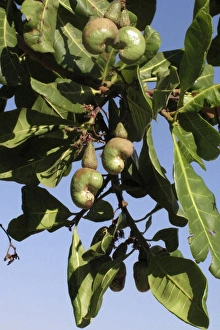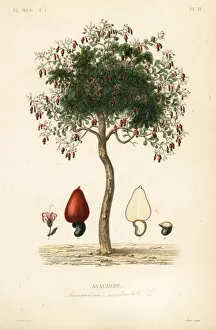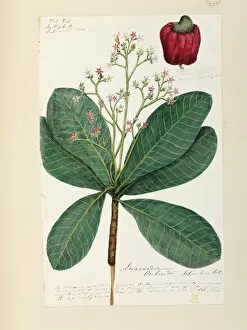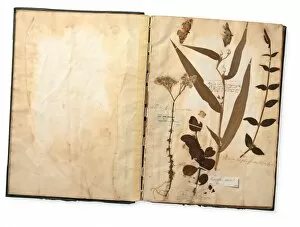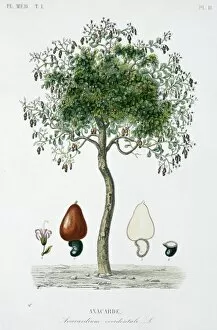Anacardium Collection
Anacardium, also known as the cashew tree or cashew nut tree (scientific name: Anacardium occidentale
All Professionally Made to Order for Quick Shipping
Anacardium, also known as the cashew tree or cashew nut tree (scientific name: Anacardium occidentale), is a fascinating plant that bears the delicious and nutritious cashew nuts. Native to South America, particularly Brazil, this versatile tree has become widely cultivated around the world. The cashew nut itself is a unique delicacy with a distinct kidney shape and a rich creamy flavor. It grows attached to the bottom of an edible fruit called the cashew apple or pinuela fruit. The vibrant red color of these fruits makes them eye-catching in markets like Fortaleza's Central Market in Ceara, Brazil. Apart from its culinary uses, it has other interesting properties too. Its sap contains gum arabic which is used in various industries such as food processing and pharmaceuticals. Additionally, parts of this tree are utilized for their wood; both Ceylon satinwood and cashew nut trees provide valuable timber. An engraving from 1877 showcases the beauty occidentale with intricate details capturing its leaves, flowers, and fruits hanging gracefully on its branches. This image serves as a reminder of how long humans have been fascinated by this remarkable plant. Furthermore, Anacardium plays host to diverse wildlife including butterflies as seen in specimens collected by Paul Hermann Coll. These creatures find shelter among its lush foliage while contributing to pollination processes that ensure future generations of this magnificent species. Anacardium stands tall not only for being the source of our beloved cashews but also for its ecological significance and cultural importance worldwide. From providing sustenance to inspiring artistry through engravings and preserving biodiversity through butterfly habitats - it truly deserves admiration.

